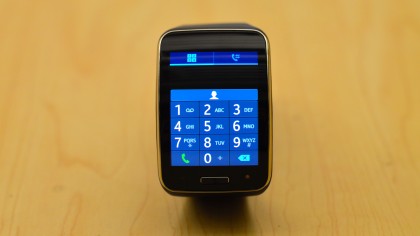Samsung Gear S2 3G vs Samsung Gear S
Samsung's Gear S2 3G goes head-to-head with the Gear S

Samsung has finally taken the wraps off of its latest line of smartwatches, including the Samsung Gear S2, Gear S2 Classic and Gear S2 3G.
The new watches boasts a number of great new features, and are certainly a step up from their predecessor, the Samsung Gear S, especially the flagship, the Gear S2 3G. Of course, the new smartwatches have a lot to live up to. The original Samsung Gear may not be such a great device by today's standard, but it was among the first smartwatches released, and had a number of great features.
Just how much better is the Gear S2 3G than the original Samsung Gear S, I hear you ask? Well, we took a look at the two devices to find out.
Samsung Gear S2 3G vs Gear S: Design

There's no denying that the design of the new Samsung Gear S2 is far better than the original Gear S. The original had a big rectangular screen and was pretty bulky and noticeable, basically looking like a smartphone strapped to the user's wrist. For the new Gear S2, Samsung has taken a different route, following in the footsteps of the likes of Motorola and offering a circular display with a more "timeless" design.
The shape of the display isn't the only change, however. While the other two versions of the Gear S2 are a little thinner than the original Gear S, Samsung has had to bulk up the 3G version a little to accommodate for the e-SIM chip, making it even thicker than the original. The Gear S was 12.5mm, or 0.49-inches thick, while the new S2 3G is 13.4mm, or 0.52-inches thick. It's a bit of a shame that the new device is so thick, however the smaller profile and classier design should help the device look better on the wrist despite the thickness.
It's also important to mention that thickness is really the only aspect in which the Gear S2 has downgraded. The main body of the device is 44.0 x 51.8mm (1.73 x 2.04 inches), and has a weight of 51g (1.8oz), while the body of the Gear S is 58.1 x 39.9mm (2.29 x 1.57 inches) with a weight of 67g (2.36oz).

The new device also features a rotating bezel, home button, and back button, all to be used to control the smartwatch. The original Samsung Gear S only included the touch display and the home button. More buttons isn't necessarily a good or bad thing, but it does help highlight a serious change in design.
Sign up for breaking news, reviews, opinion, top tech deals, and more.
Samsung Gear S2 3G vs Gear S: Display
This one is a bit tricky when it comes to finding a winner. The new Gear S2 3G has a AMOLED display of 1.2-inches and a 360 x 360 resolution. The Gear S has a display of 360 x 480 pixels and is two inches. The display on the older device, however, is not circular, which is a preference for many users.
Really the display on the Gear S is better in terms of pixel density, however those who prefer a circular display are likely willing to forgive this, especially on a display so small that the slightly smaller number of pixels might not even be visible.
Samsung Gear S2 3G vs Gear S: Connectivity
The new Samsung Gear S2 includes Wi-Fi, Bluetooth 4.1, NFC and an e-SIM card. The e-SIM card is basically a built-in SIM card that can be registered to work on mobile networks. NFC will also come in handy for Samsung users once Samsung finally releases Samsung Pay to the public. Users will reportedly be able to pay for goods using their smartwatch, which will be a very welcome feature for those looking for a new payment method.

The original Gear S includes most of the same connectivity options except for NFC and the fact that it has a nano-SIM instead of an e-SIM. Because of the lack of NFC, the Gear S2 3G is "better" in terms of connectivity.
Samsung Gear S2 3G vs Gear S: Battery
Battery life has been a big issue for wearable devices so far, and that is likely to continue for at least the next few years. The Gear S included a 300mAh Li-ion battery and charged through a charging cradle.
The Gear S2 3G includes a battery of the same capacity of its predecessor, however it offers magnetic wireless charging, making it slightly easier to charge.
- 1
- 2
Current page: Gear S2 3G versus Gear S: Design, display, battery
Next Page Gear S2 3G versus Gear S: Features and verdictChristian is a writer who's covered technology for many years, for sites including Tom's Guide, Android Central, iMore, CNN, Business Insider and BGR, as well as TechRadar.